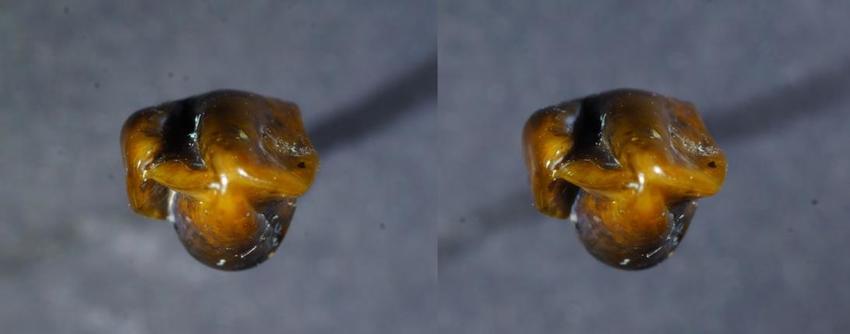9 million-year-old teeth suggests earliest human relatives lived in Europe

Researchers in Germany have recovered an unusual set of teeth estimated to be 9.7 million years old. The teeth are unlike any found in Europe or Asia, but closely resemble the teeth of Lucy, the famed female specimen of the hominin species Australopithecus afarensis.
Scientists found the teeth while sifting through sediment in the Rhine river near Eppelsheim, a small city in southwestern Germany.
"They are clearly ape-teeth," lead researcher Herbert Lutz told the German newspaper Merkurist. "Their characteristics resemble African finds that are four to five million years younger than the fossils excavated in Eppelsheim. This is a tremendous stroke of luck, but also a great mystery."
"I don't want to over-dramatize it, but I would hypothesize that we shall have to start rewriting the history of mankind after today," Mainz Mayor Michael Ebling said at a press conference announcing the discovery last week.
Though scientists are still examining the teeth, researchers detailed their analysis so far in a paper pre-published online with ResearchGate.
The two teeth making up the set were found separately, but scientists say they are certain the pair belonged to the same specimen.
"Both teeth represent a hitherto unknown great ape with startling hominin resemblances," scientists wrote in their study.
The team of German researchers apparently sat on their findings for more than a year before publishing, wanting to make sure their analysis and conclusions were sound.
Researchers have previously found evidence of apes roaming Europe several million years ago, but no hominins have ever been found. Most paleontologists believe the earliest human lineages split in Africa between 5 million and 7 million years ago, and that the first modern humans emerged from East Africa between 400,000 and 200,000 years ago.
A few studies published in recent months have challenged the assumed timeline, however.
One study published earlier this year presented a pair of teeth found in Greece and Bulgaria as proof the human-chimp split occurred in the Mediterranean. Scientists at the University of Toronto claimed the teeth belonged to a hominin-like ape and were between 7.24 and 7.175 million years old — older than the earliest pre-human species from Africa.
Despite the recent discoveries of odd-looking teeth, the evidence of early humans in Europe remains scant. A jaw bone, teeth and some footprints are dwarfed by an extensive collection of fossils belonging to African hominins like Homo naledi and Homo floresiensis.
Still, the latest discovery presents a mystery that requires explaining — a mystery researchers think other scientists will take seriously.
"This will amaze experts," regional archaeologist Axel von Berg told the German newspaper Allgemeine Zeitung.
Written by Brook Hays (UPI)
Featured image: Researchers discovered a pair of ancient hominin-like teeth in western Germany. The find may undermine the "Out of Africa" theory of human evolution, some scientists say. Credit: Herbert Lutz

Commenting rules and guidelines
We value the thoughts and opinions of our readers and welcome healthy discussions on our website. In order to maintain a respectful and positive community, we ask that all commenters follow these rules.